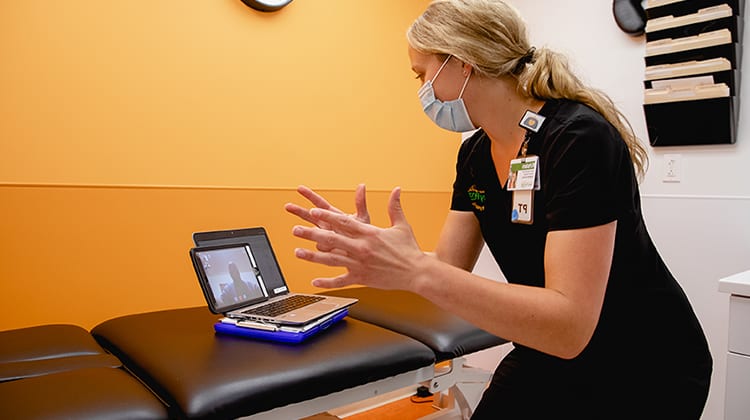Recently, Jason Peoples (Director of Technology and Innovation, Mary Free Bed Rehabilitation Hospital) shared his experiences and perspectives on the role of technology in enhancing patient care:
- Using Virtual Care to Reassure Patients During the PHE: “Unfortunately, it took the pandemic to really catapult virtual care into mainstream healthcare delivery, simply because Mary Free Bed had to. We had patients that we needed to continue treatment with. There was a sense of panic; people didn’t know what tomorrow might bring. So, we provided some reassurance and helped patients continue treatment. We flipped the switch and we were able to go virtual 100% overnight, essentially when the public health emergency was announced.”
- Improving Access to Care by Engaging Patients Virtually: “We know a more engaged person is going to have a better outcome. The idea of helping people and providing them access where they either have no access before or they are three months out for a visit. With Synzi, we’re continuing to see patients in different ways and meeting consumers where their expectations are. If you focus on what’s best for the person, you can’t go wrong. The benefits are access; people need access to healthcare. We’ve been able to demonstrate wide success through using Synzi to engage patients virtually during the pandemic with providers, physicians, and even registered dieticians.”
- Providing Therapy Services Across Geographic Barriers: “A lot of what we do in physical medicine is therapy. We think about PT. We think about OT. We think about speech. We think about our psychologists, all being rolled into the services that Mary Free Bed provides. Distance is a barrier – whether for someone with limited mobility in town, or if they are three hours away, or living a remote, rural area of the state… Access to healthcare is a challenge. We acknowledged that is a real issue and embraced Synzi to take action and provide virtual therapy.”
- Unleashing the Power of Remote Patient Monitoring: “Remote patient monitoring devices are now recognized as a tool that keeps people out of the healthcare systems. That’s a good thing… Let’s get improvement of care here. Let’s keep people out of the healthcare systems with different touchpoints. Now we can deploy virtual care and RPM technologies patients at high risk for admission or readmission in some instances. Preventative measures are real. Being able to have staff monitor those virtual interventions and conversations with patients is key. I think that that’s where we’re going to see a big shift in telehealth with more remote patient monitoring.”

